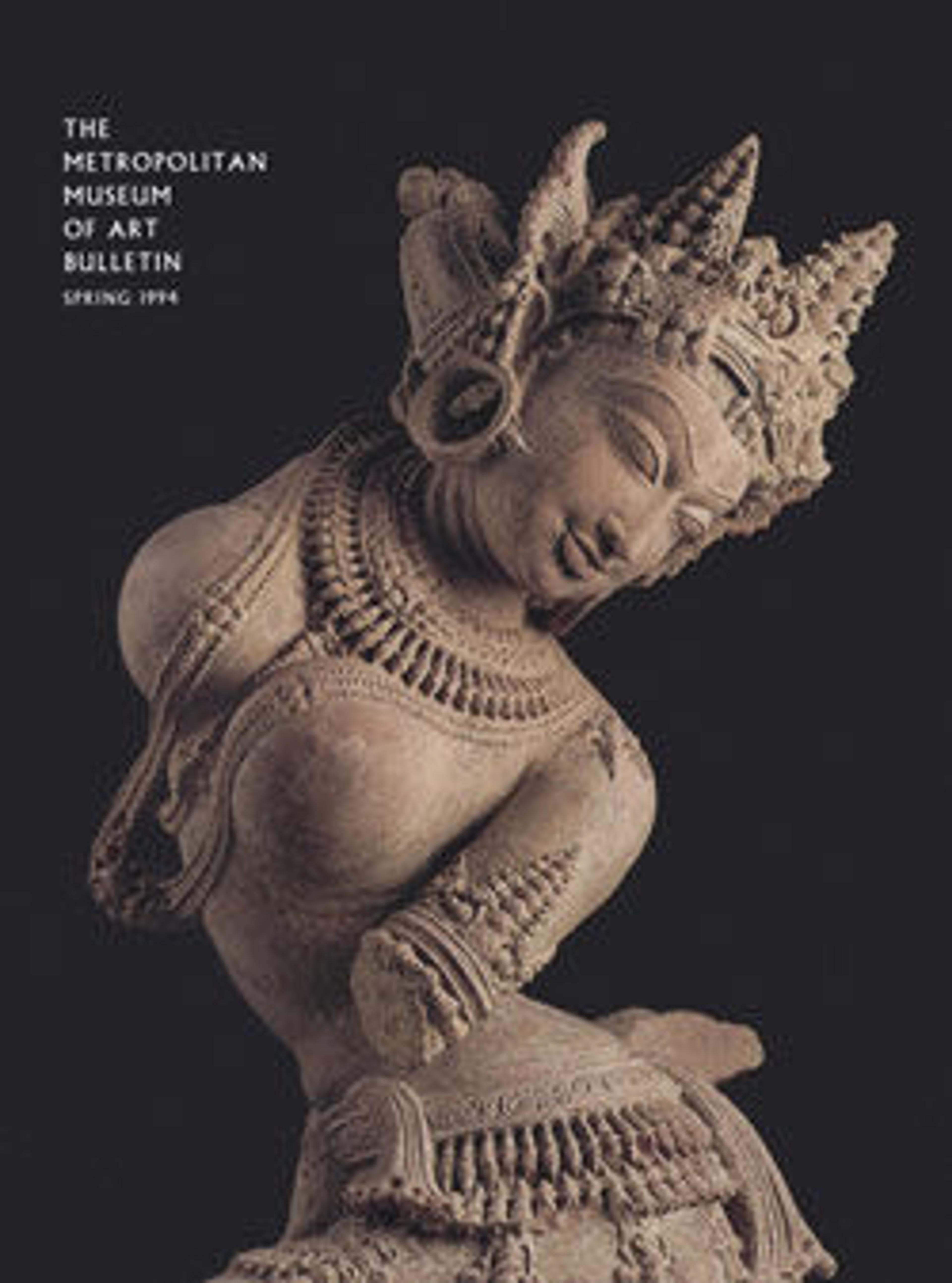Jar
Ceramics with painted rather than impressed or incised designs date to the final phase of the Ban Chiang culture. This solid, full-bodied jar has a narrow neck, wide flaring mouth, and flat base. Alternating areas of red pigment with white geometric and curvilinear designs, and plain white bands decorate the vessel. Small white dots along the edges of the white bands, and red ones placed in the centers, along with the diamond shapes at the neck and base, add an element of playfulness to the deceptively simple design.
Ceramics from the late phase are the most numerous and well known of the Ban Chiang wares. Unlike middle-phase examples, which were often purposely shattered as they were placed in burials, late-phase Ban Chiang pieces were unbroken when they were added to the grave. Bronze adornments, particularly bracelets, are also common in Ban Chiang graves, and those from final-phase burials are generally larger and more elaborately decorated than earlier ornaments.
Ceramics from the late phase are the most numerous and well known of the Ban Chiang wares. Unlike middle-phase examples, which were often purposely shattered as they were placed in burials, late-phase Ban Chiang pieces were unbroken when they were added to the grave. Bronze adornments, particularly bracelets, are also common in Ban Chiang graves, and those from final-phase burials are generally larger and more elaborately decorated than earlier ornaments.
Artwork Details
- Title:Jar
- Period:Middle period
- Date:300 BCE–200 CE
- Culture:Thailand (Ban Chiang culture)
- Medium:Earthenware with buff slip and red oxide decoration
- Dimensions:H. 10 7/8 in. (27.6 cm)
- Classification:Ceramics
- Credit Line:Gift of Cynthia Hazen Polsky, 1987
- Object Number:1987.424.9
- Curatorial Department: Asian Art
More Artwork
Research Resources
The Met provides unparalleled resources for research and welcomes an international community of students and scholars. The Met's Open Access API is where creators and researchers can connect to the The Met collection. Open Access data and public domain images are available for unrestricted commercial and noncommercial use without permission or fee.
To request images under copyright and other restrictions, please use this Image Request form.
Feedback
We continue to research and examine historical and cultural context for objects in The Met collection. If you have comments or questions about this object record, please contact us using the form below. The Museum looks forward to receiving your comments.
